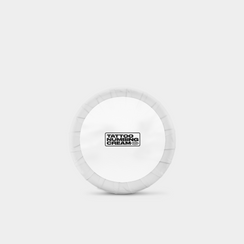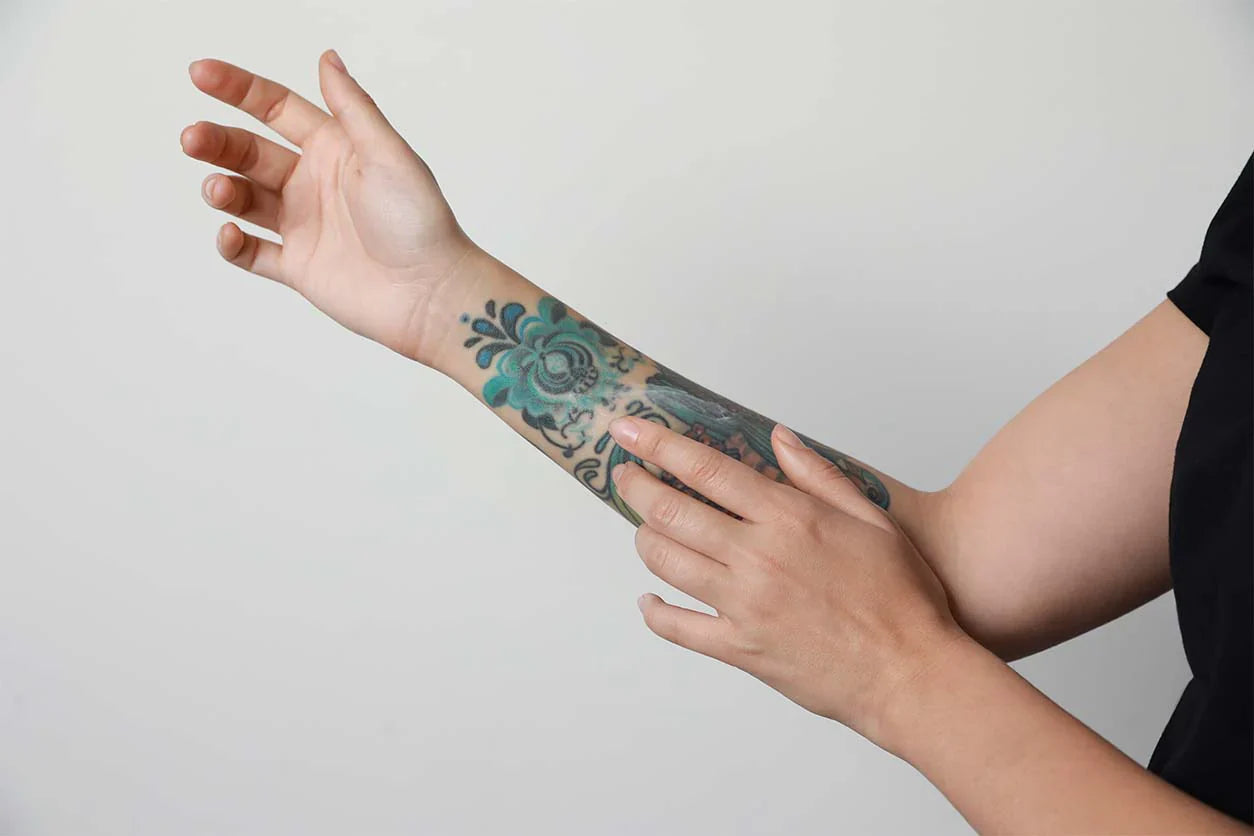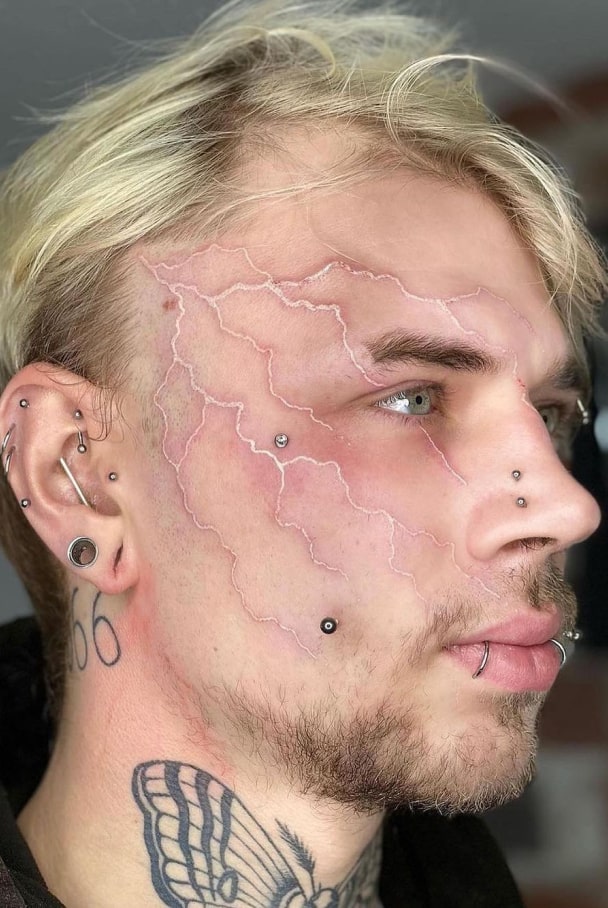Getting a tattoo is an exciting experience — but if you’re in for a long session, preparation is everything. Whether you’re tackling a full sleeve, back piece, or large detailed design, your skin plays a huge role in how well the tattoo heals and how cleanly the ink sets.
In this guide, we’ll cover everything you need to know about how to prep your skin for a long tattoo session, from hydration and exfoliation to numbing and aftercare. Because the better you prep, the smoother (and more comfortable) your tattoo experience will be.
Why Skin Preparation Matters
Your skin is the artist’s canvas — and like any art form, the quality of the canvas affects the outcome. Healthy, well-prepped skin absorbs ink more evenly, reduces irritation, and helps the tattoo heal faster.
Poor prep, on the other hand, can lead to patchy color, longer healing times, and unnecessary discomfort during your session.
If you’re sitting for multiple hours, your skin is going to go through a lot — so start your prep days in advance, not just the morning of.
Step 1: Hydrate Like You Mean It 💧
Hydration is the foundation of great skin (and a great tattoo). When your body is properly hydrated, your skin becomes more supple and elastic, which helps your artist work more smoothly.
Do this:
-
Drink at least 2–3 liters of water per day for at least three days before your appointment.
-
Avoid excessive alcohol and caffeine — both dehydrate your body and can thin your blood, which means more bleeding during your tattoo.
-
Use a hydrating moisturizer leading up to the session to keep your skin soft and pliable (avoid applying lotion on the day of your tattoo though).
Why it matters:
Hydrated skin allows the needle to glide more easily, making the tattooing process less abrasive and helping the ink settle better.
Step 2: Exfoliate Your Skin 🧴
A smooth surface is key for precision and ink retention. Dead skin cells can block the needle’s path and interfere with the stencil, so exfoliation helps your artist work cleanly and efficiently.
Do this:
-
Use a gentle scrub, like Tattoo Numbing Cream Co.’s Tattoo Scrub, 1–2 days before your appointment.
-
Gently massage it in circular motions to remove dead skin and dirt buildup.
-
Rinse thoroughly and pat dry — never over-scrub, as raw or irritated skin can cause issues during tattooing.
Pro tip:
The Tattoo Scrub is perfect because it also preps your skin for numbing cream, allowing it to soak in evenly for maximum effect.
Step 3: Get Plenty of Rest 💤
A well-rested body heals better and handles pain more effectively. Lack of sleep can make you more sensitive to pain and increase the chance of fidgeting during the session.
Do this:
-
Aim for 7–9 hours of solid sleep the night before.
-
Avoid late nights, partying, or anything that dehydrates your body.
You’ll be sitting still for hours, so being well-rested helps you stay calm and focused — and helps your artist concentrate without interruptions.
Step 4: Eat a Balanced Meal Before You Go 🍽️
Never show up to a tattoo appointment hungry. Long sessions can cause dips in blood sugar, leaving you dizzy, weak, or even faint.
Do this:
-
Eat a protein-rich meal with healthy carbs 1–2 hours before your appointment.
-
Bring snacks like fruit, nuts, or granola bars for longer sessions.
-
Stay away from sugary energy drinks — opt for water or electrolyte drinks instead.
Keeping your blood sugar stable helps you maintain energy and prevents mid-session crashes.
Step 5: Apply Numbing Cream Properly 🧊
Let’s be real — long tattoo sessions can test anyone’s pain tolerance. Using a quality tattoo numbing cream helps you stay relaxed, reduces twitching, and lets your artist focus without interruptions.
Do this:
-
Exfoliate your skin with Tattoo Scrub to remove dead cells.
-
Clean and dry the area completely.
-
Apply Tattoo Numbing Cream Co.’s Signature Numbing Cream in a thick, even layer.
-
Wrap it with plastic film (occlusion) for 45–60 minutes before your appointment.
-
Remove and clean off the cream just before tattooing begins.
During longer sessions, ask your artist to use Miracle Numb Spray once the skin is open to extend the numbing effect.
Why it matters:
Numbing allows you to stay still and relaxed, helping your artist achieve cleaner lines and smoother shading — and you can even enjoy the process.
Step 6: Dress for Comfort 👕
Wear something comfortable, loose, and easy to move in. Avoid tight fabrics that may rub against your tattoo or restrict access to the area being inked.
Pro tip:
If you’re getting a sleeve, wear a loose short-sleeve or tank. For legs or ribs, bring shorts or a sports bra if needed.
Always think about your artist’s workspace — they need easy access to your skin.
Step 7: Avoid Certain Substances 🚫
Certain substances can affect your skin, blood flow, and pain response.
Avoid:
-
Alcohol (24 hours before and after your tattoo)
-
Blood thinners (like aspirin, unless prescribed by a doctor)
-
Excess caffeine
-
Sun exposure and tanning — sunburned skin cannot be tattooed
-
Shaving too early — let your artist handle it to avoid irritation
These all impact how your skin reacts to the tattoo needle and how your body heals afterward.
Step 8: Mentally Prepare 🧠
Long tattoo sessions can be a mental game. Between the hum of the machine, the repetitive motion, and the time commitment, it’s easy to feel restless.
Do this:
-
Bring headphones and a playlist or podcast to keep you distracted.
-
Stretch and take breaks as needed.
-
Remind yourself — it’s worth it!
The more relaxed you are, the better the session goes for you and your artist.
Step 9: Post-Session Care ❤️
Once your tattoo is done, the healing process begins. Keeping your skin clean and moisturized helps preserve the quality of your tattoo.
Use:
-
Keep It Clean Foam – a gentle cleanser for washing your tattoo.
-
Easy Heal Balm – to reduce irritation, speed up recovery, and prevent scabbing.
-
Tattoo Glow Moisturiser – once healed, to maintain that fresh ink look and prevent ashy skin.
Remember: good healing is just as important as good prep.
Final Thoughts
Prepping your skin properly is one of the best things you can do for your tattoo — especially if you’re sitting for hours. From hydration and exfoliation to numbing and aftercare, every step ensures your tattoo heals beautifully and stands the test of time.
At Tattoo Numbing Cream Co., we believe pain-free tattoos aren’t just possible — they’re the future. Prep smart, numb right, and heal strong.
Because great tattoos start with great skin.








